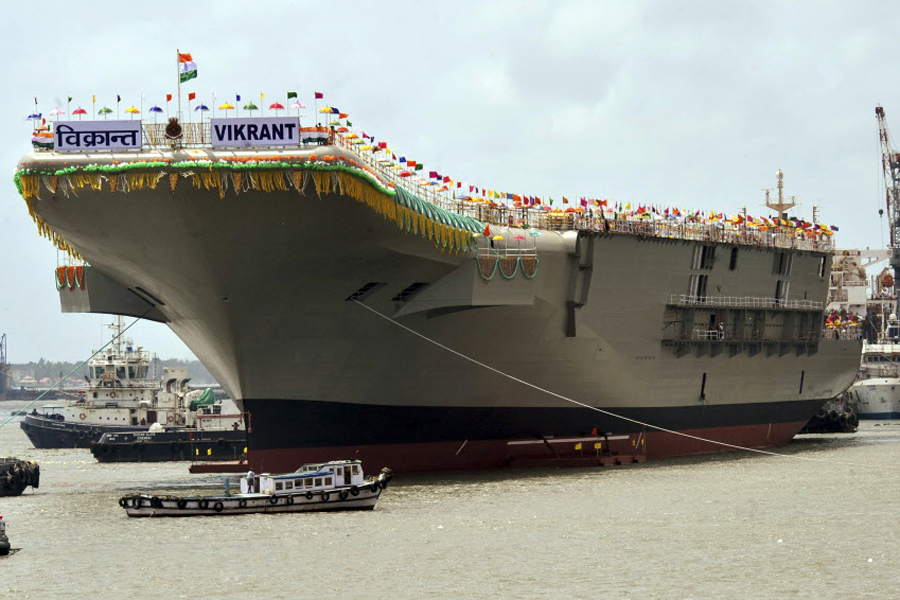India aircraft carrier: New Delhi launches first home-built carrier
Since the Battle of Midway in World War II, the weapon that has most defined naval power is the aircraft carrier.
By enabling countries to deploy air power far from their own shores, carriers have become the unit by which modern navies are measured. Only a handful of countries have them and can build them, with the majority of such vessels in the hands of the US Navy.
So it's no small thing that India today launched its first domestically built carrier. With the first-phase launch of what will eventually be named the INS Vikrant, India joins an elite club of countries that have built their own carriers: Only the United States, Russia, France, and Britain have done the same.
The Vikrant weighs in at 37,500 tons, and will carry as many as 36 aircraft, reports The Times of India. Though small compared with the world's largest, the US Nimitz class carrier, which is two-and-a-half times heavier and carries 85 aircraft, the Vikrant marks a major milestone for India's military capabilities.
Building an aircraft carrier is a rare feat, and as the BBC notes in a May 2012 article, "Nuclear weapons give a nation 'cachet' ... [b]ut carriers give a nation 'capability'."
[C]arriers are still as relevant as ever, says Lewis Page, a former naval officer and author of Lions, Donkeys and Dinosaurs: Waste and Blundering in the Military. The drone might be all the rage but you still need somewhere to launch it from.
Nuclear submarines are "excellent" at many things. Their Tomahawk cruise missiles flew hundreds of miles to knock out Colonel Gaddafi's air force.
"But a submarine can't tell you where the targets are. And they can't be easily rearmed apart from at a naval base."
The Times adds that the Vikrant's successful float-out – taking it out of drydock – is expected to spur the Indian Navy to soon green-light construction of a second domestic carrier. India already has a smaller carrier, the Viraat, which it acquired from the British in 1987, and plans to commission a carrier it bought from Russia in 2004, the INS Vikramaditya, later this year.
The Vikrant's initial launch doesn't change the global balance of power. It still has to undergo several years of outfitting, and is not expected to be commissioned for duty until 2018, reports the Times. And even when it does enter service, the US will likely still retain the huge edge in carrier might that it currently enjoys. According to IHS Jane's figures from last year, the US has 20 plane-carrying ships, 10 of which are the huge Nimitz class, while the rest of the world combined has only 13.
But it does underscore India's increasing military influence in the region, and puts it in deeper competition with Asia's other emerging naval power: China. Last year, China launched its first aircraft carrier, which it purchased from Ukraine and refitted, and it is reportedly constructing a new carrier at a facility near Shanghai, according to IHS Jane's.
According to the Times, Zhang Junshe, the vice president of China's Naval Research Institute, told Chinese state media that the Vikrant, "along with reinforced naval strength, will further disrupt the military balance in South Asia."
Still, as the US military newspaper Stars and Stripes reported in June, to have an effective aircraft carrier, a navy needs a large fleet of support ships to assist it. And China – like India – has a way to go before it has that fleet.
The PLA Navy may soon be comparable in strength to the Spanish or Italian fleets, but launching an aircraft carrier isn’t enough to make it competitive with the top powers, [Ralph Cossa of the Pacific Forum in Hawaii] said.
“You need to be able to support it [an aircraft carrier] with missile boats and submarines, and all this looks like it is years away for China,” he said.






